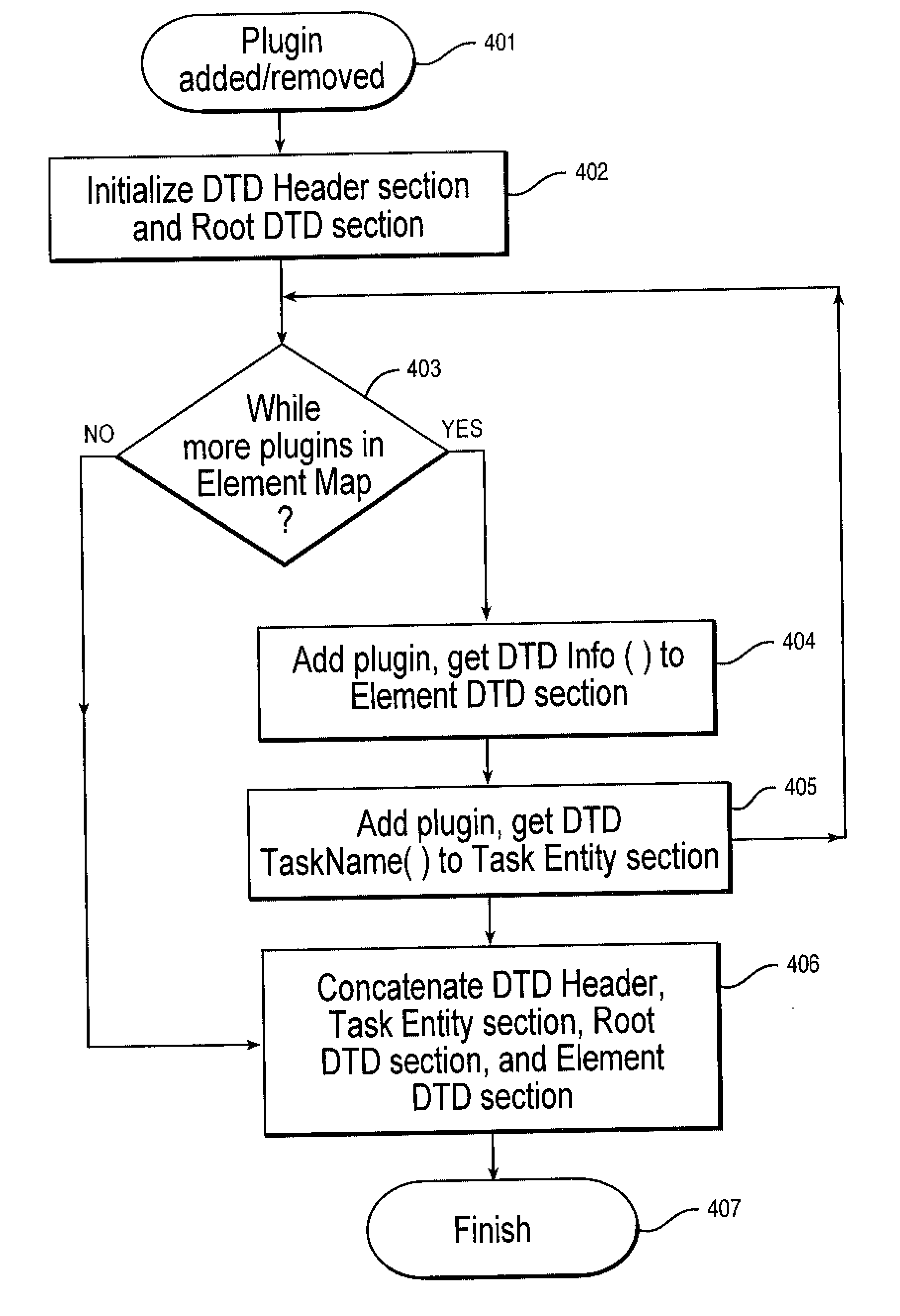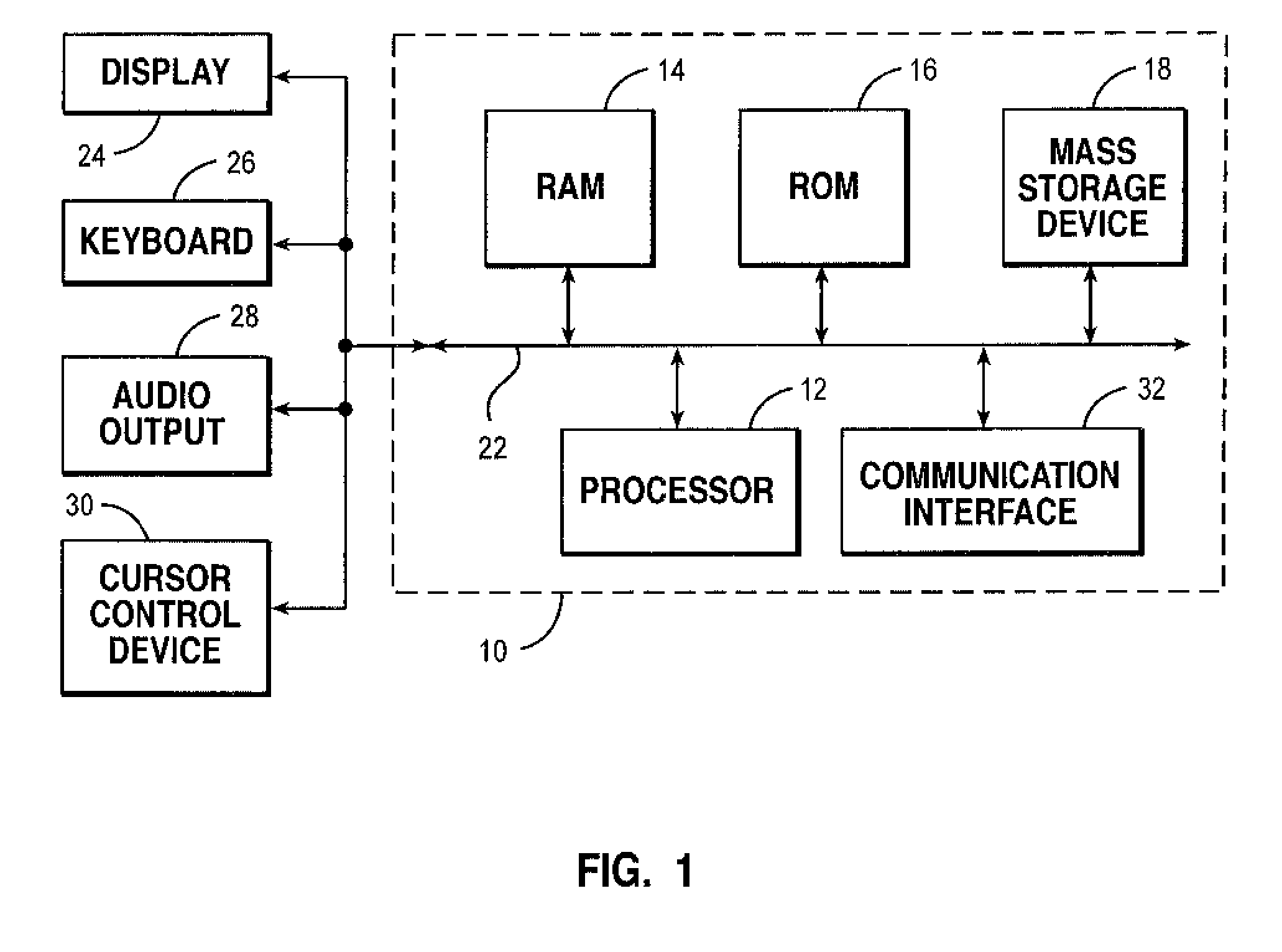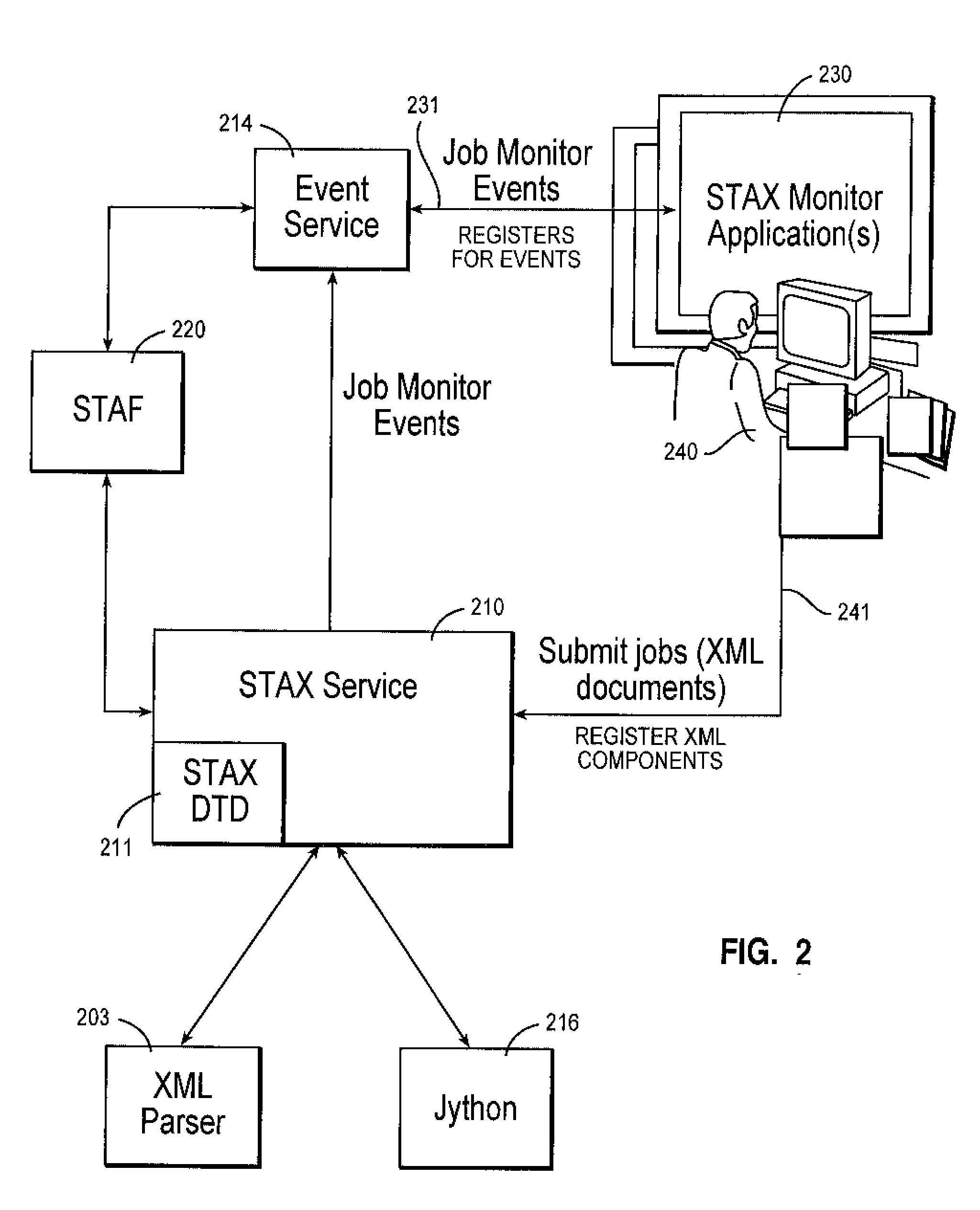Dynamic creation of an application's XML document type definition (DTD)
a dynamic creation and document type technology, applied in the field of web document processing, can solve the problems of not achieving the popularity of the web, too complex sgml, and very powerful sgml
- Summary
- Abstract
- Description
- Claims
- Application Information
AI Technical Summary
Benefits of technology
Problems solved by technology
Method used
Image
Examples
Embodiment Construction
[0036] In the following description, reference is made to the accompanying drawings which form a part hereof, and which illustrate several embodiments of the present invention. It is understood that other embodiments may be utilized and structural and operational changes may be made without departing from the scope of the present invention.
[0037] In general, the present invention is preferably executed in a computer system that performs computing tasks such as manipulating data in storage that is accessible to the computer system. In addition, the computer system preferably includes at least one output device and at least one input device.
[0038] Referring now to the drawings, and in particular to FIG. 1, there is depicted one embodiment of a computer system with which the method, system, and program of the present invention may be advantageously utilized. Computer system 10 comprises a bus 22 or other communication device for communicating information within computer system 10, an...
PUM
 Login to View More
Login to View More Abstract
Description
Claims
Application Information
 Login to View More
Login to View More - R&D
- Intellectual Property
- Life Sciences
- Materials
- Tech Scout
- Unparalleled Data Quality
- Higher Quality Content
- 60% Fewer Hallucinations
Browse by: Latest US Patents, China's latest patents, Technical Efficacy Thesaurus, Application Domain, Technology Topic, Popular Technical Reports.
© 2025 PatSnap. All rights reserved.Legal|Privacy policy|Modern Slavery Act Transparency Statement|Sitemap|About US| Contact US: help@patsnap.com



